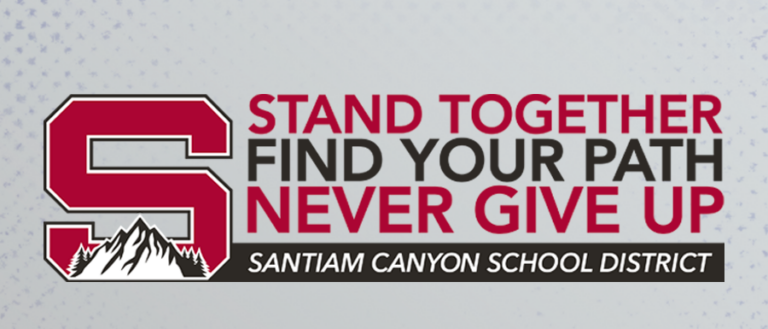From White Supremacy Culture To Regenerative & Liberatory Culture: Understanding & Transforming Culture
Only by understanding and being able to identify white supremacy culture can we hope to transform our environment into one of regenerative & liberatory culture. These guides and activities are a jumping-off point to help you get started with this process.
Passion. Pride. Promise. Two Leaders Help Pave the Way for Their Students & Communities
Tucked away in the hills of rural western Oregon, the Vernonia and Gaston school districts defy many of the stereotypes most of us hold when we think of rural schools. Their communities face both common and unique challenges. Vernonia Elementary Principal, Michelle Eagleson, and Gaston Superintendent, Summer Catino, share how their small schools and communities achieve greatness.
Unpacking “All” Protocol: Making Sure We Actually Serve ALL Students
A foundational question we should be asking in education is: “What is our school doing to prepare ALL students?” In the following activity, you’ll unpack the word “all” in order to examine who and what we mean and how to design educational approaches that can get us closer to “all” students.
Student Voice & Choice: Increase Student Agency and Ownership of Learning
This short video and brief reflection activity can assist you in leading conversations about ways to increase student agency and ownership of learning. This is not a “how-to” video, but more of a conversation-starter that you can use to start discussing what the process will look like in your school.
Holistic Student Empowerment: Letting Student Voice Lead the Way
This resource provides research and ideas from trauma-responsive schools connected through the “Rural Vitality Lab” based in Maine and explains the link between student voice and well-being.
3 Elements of a Team: Building the Capacity of a Leadership Team
This short video and brief reflection activity can help you assess whether your school’s leadership team(s) are complete and effective and reflect on how to strengthen and empower them.
The Importance of a Leader Having Clarity and Vision: Reflect on Your “Why”
This short video and brief reflection activity can help you assess whether you’re headed in the “right” direction as a leader. As Simon Sinek describes in the video, “A WHY is like a compass direction; it tells you where you’re going.”
Historically Responsive Literacy Framework: Cultivating Holistic Learners & Citizens
In this interview, Gholdy Muhammad explains elements of his Historically Responsive Literacy Framework. It explores the questions of: How does our curriculum and instruction help students to learn about themselves or others? How does our curriculum and instruction help us understand power, equity, and anti-oppression? Dr. Gholdy Muhammad emphasizes that despite its name, “The historically responsive equity framework is not just for literacy instruction or literacy educators per se but for all teachers across the disciplines.”
Culturally Responsive Teaching: Ensuring ALL Students Learning & “Ready for Rigor”
Culturally responsive teaching (CRT) is often and understandably confused with other educational practices and models such as multicultural education, trauma-informed practices, social justice, etc. However, with an understanding of what CRT actually is (and isn’t), you will quickly discover what you’re already doing well for your students and better incorporate even more effective CRT practices throughout their school day to ensure equitable learning for all students.
The Self-Made Myth: Identify and Address Systemic Inequities
With the best of intentions, we still often fall short of actually addressing systemic inequities because of lingering beliefs about “the American dream,” “pulling ourselves up by our bootstraps,” and that everyone is capable of success if they just try hard enough. We may think we’re helping “build character” or instilling self-discipline, but really, these ideas only serve those who are already better equipped to be successful because of who they are and not what they do. This video and reflection activity aim to help you start thinking about how your school might be furthering systemic inequities and brainstorm ways to start addressing it.
4 A’s Protocol: Engage Staff in Focused Meetings
This is a protocol that is used to focus meetings and professional development discussions. Leaders/teachers will have an opportunity to connect with the presented material, then raise different perspectives about that same material.
A Source of Strength and Community: How Identity Keeps Santiam Canyon United Even When Everything Else is Falling Apart
Santiam Canyon Superintendent, Todd Miller, shares how their school district’s identity and maxims are a source of community and strength, especially when faced with unimaginable disaster.
Understanding & Visualizing School Identity: If Your School Was an Animal
Thinking about and understanding your school’s identity can be a challenging process. This activity helps you consider this complex concept in a fun and creative way that may actually help you better understand your school identity than by thinking about it in more direct terms.
Inverted Pyramid Planning Template: Planning an MTSS Framework That Works for ALL Students
This MTSS Planning Template will not only help you build out and visualize your school’s complete MTSS framework but also start taking steps to implement schoolwide changes that benefit all students now.
Coherence and a Multi-Tiered System of Supports Activity: Evaluate & Visualize Your MTSS Framework
Coherence is not simply the alignment of goals, resources, and structures, although that may help. Our definition of coherence is the shared depth of understanding about the nature of the work. In other words, it is fully and only subjective.
It does not serve much purpose for education leaders to “explain” coherence or rely on slick strategic plans. Because coherence exists in the minds of people, it must be developed across given groups.
So how do leaders achieve shared understanding about the work given the turmoil and the comings and goings of policies and people?
MTSS Framework and the Work of the PLC: Two Schoolwide Systems & Three Big Ideas Work Together to Support ALL Students
You cannot effectively implement RTI without the PLC process. The three big ideas drive the work of a PLC: a focus on learning, a collaborative culture, and a results orientation. You cannot effectively implement RTI without the PLC process. The three big ideas drive the work of a PLC: a focus on learning, a collaborative culture, and a results orientation.
What Great Principals Really Do: 4 Leadership Behaviors that Contribute to Your School Success
According to the article “What Great Principals Really Do,” “A school’s success is largely determined by the effectiveness of its principal—decades of research have made this clear. Less settled is the question of what principals need to know and do to drive positive outcomes in their schools.” The research findings of a 2021 report help narrow down “what principals need to know and do” into four themes all implemented through the lens of equity: Instructionally Focused Interactions, Building a Productive School Climate, Facilitating Collaboration, and Strategic Management.
How to Control the Heat: Quick Ways to Effectively Manage Difficult Topics & Situations
As a school leader, mitigating and managing conflict as well as difficult topics and situations may come with the territory, but knowing what to do in the moment is often no easy task. This is often the case when ensuring equity of diverse voices when developing a shared identity, vision, and purpose. Sometimes, you need to lean into the conflict more in order to bring about resolution. Other times, prompt de-escalation is needed to allow for reflection and discussion at a later time. Review these tips periodically, so you are better equipped to employ them when needed.
Above and Below the Surface Elements of a School Community: Understand & Evaluate Your School’s Identity
There’s a lot of talk about school community, climate, culture, and identity and how they’re all so important. But what exactly are they and how can you ensure your school actually develops a strong and positive community?
Work Cycle for Teams: Keep Collaborative Teams Focused on Their Purpose & Goals
So, you want to get on-board with continuous improvement and lasting change in your school and education; you’ve worked through the root causes of core issues and needs; you’ve drafted the big plans and made them manageable; you’ve created your A-Teams; now what? This guide will help your teams for effectively and efficiently work towards achieving common goals and purpose.
Annual Goals and 90-Day Action Plan Cycle: Make Long-Term Goals Manageable & Attainable
Understanding that continuous improvement is necessary and identifying what needs to be improved are the first steps towards lasting school change, but then what? This customizable template is intended to help get you started on implementing an annual plan for continuous improvement that is broken up into 90-day “mini-goals,” so your long-term goal remains focused and sustainable for year one and beyond.
School Continuous Improvement Plan Template: Get Started on Focused, Customized, Sustainable Change
Understanding that continuous improvement is necessary and identifying what needs to be improved are the first steps towards lasting school change, but then what? This template is intended to help get you started on implementing a plan for continuous improvement that is focused, customizable, and sustainable.
Building a Culture of Continuous Improvement Survey: Self-Assessment to Gauge Progress Toward Lasting Cultural Growth & Change
Assessing school/district culture and the readiness of all stakeholders to embrace a culture of continuous improvement is an important first step toward lasting and systemic change. You can implement this survey periodically to gauge progress toward cultural shifts that support school/district-wide change.
Importance of Inclusiveness in Our School Identity: A Leadership Team Activity
The below activity will help you examine your leadership team makeup, decision-making practices and protocols, as well as communication strategies.
























